Abstract
Three separate hospital clinical microbiology laboratories using three different identification systems participated in the identification of Enterobactericeae from a central pool of 'unknown" clinical isolates. With conventional tubed media, API-20E (Anlytab Products Inc.) and R/B tube (Corning Diagnostics) systems, there was a 91.1% agreement in the species designation. No significant differences at the 95% confidence level were found among the systems. Evaluation of individual tests within the systems used revealed lysine decarboxylase of the conventional and citrate of the API-20E system to be significantly different from the same test within the other two systems. The lysine decarboxylase of the conventional system had species relatedness, whereas the differences in citrate of the API-20E system were not related to a particular species. These individual test variations did not affect final organism identification. Reproducibility, evaluated as the system's ability to designate the same identification on two separate occasions, was 92 to 94% for each system. Exact duplication of selected sets of reactions was 60% for conventional, 45% for API-20E, and 61% for R/B. The variations in sets of reactions differed with the system and with the organism involved. The findings suggest equivalency among the three systems in ability to identify common clinical isolates of Enterobacteriaceae and point out the limited usefulness of these systems for biochemical biotyping.
Full text
PDF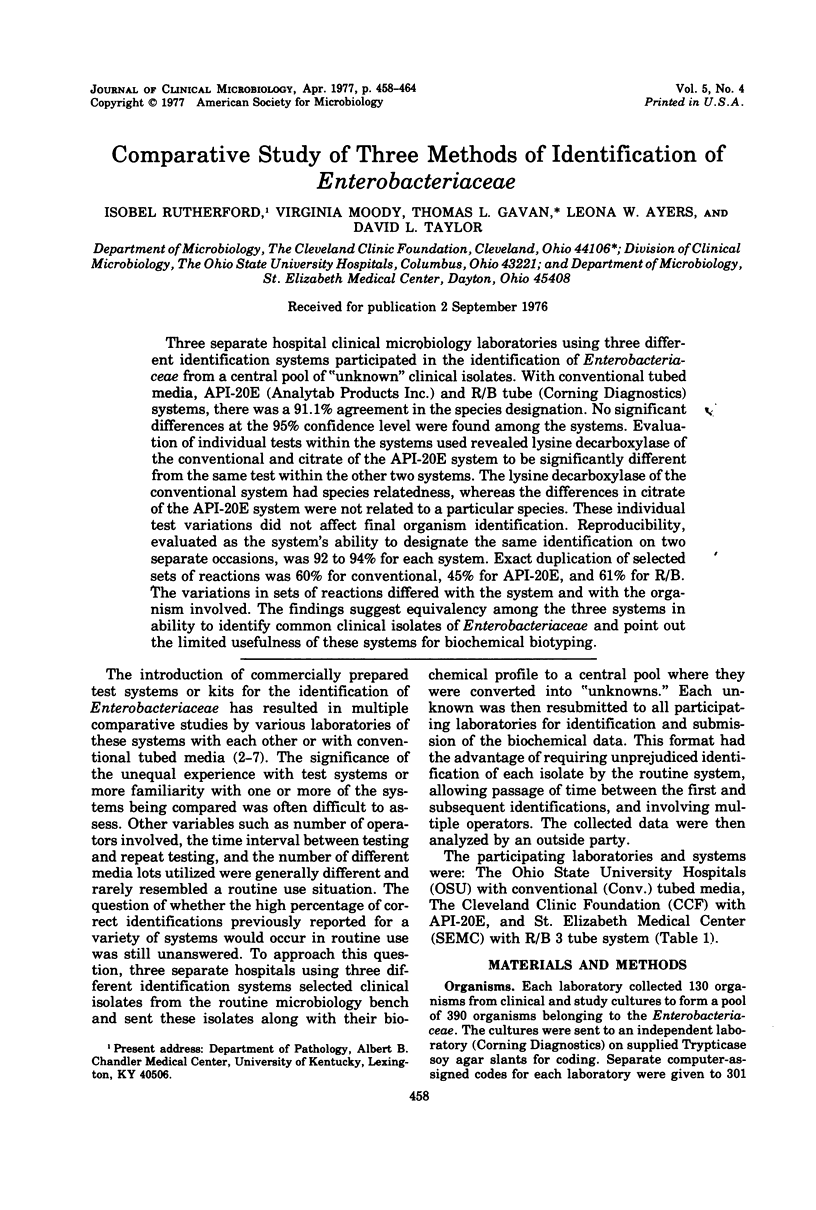
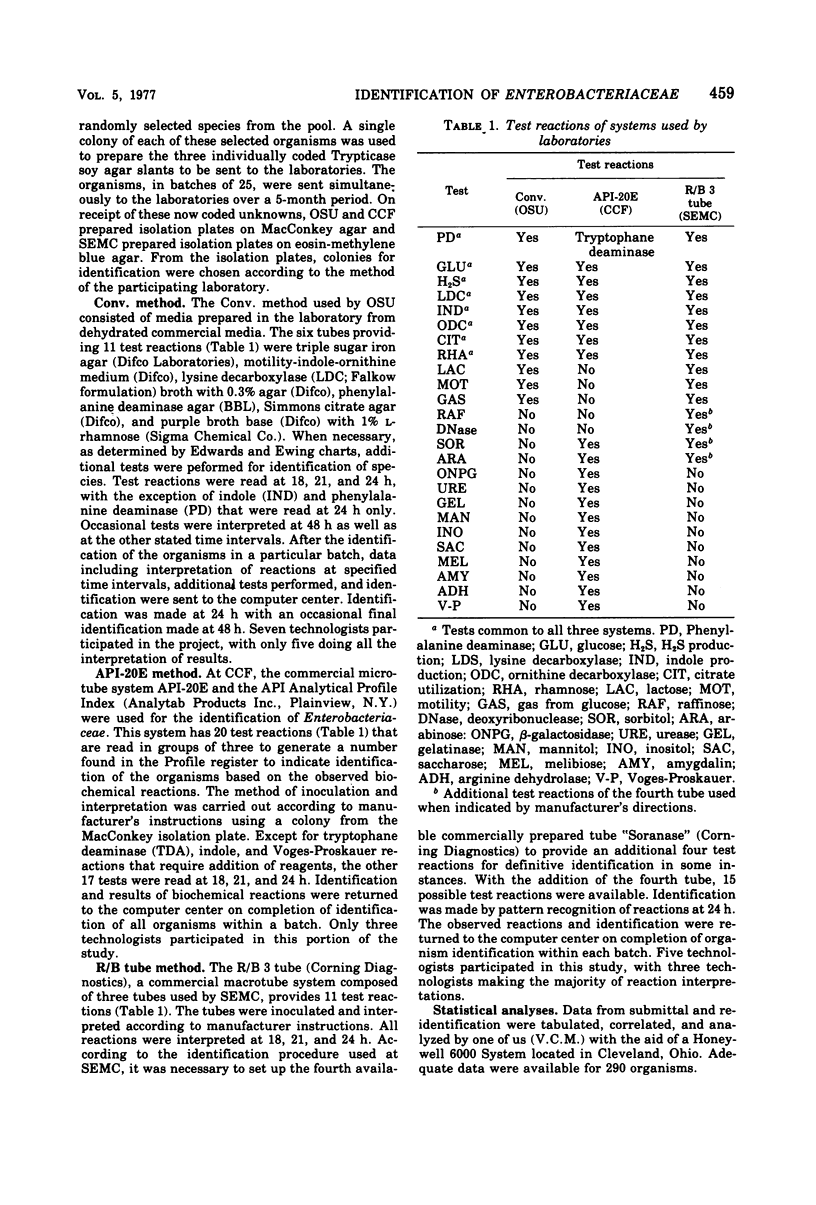

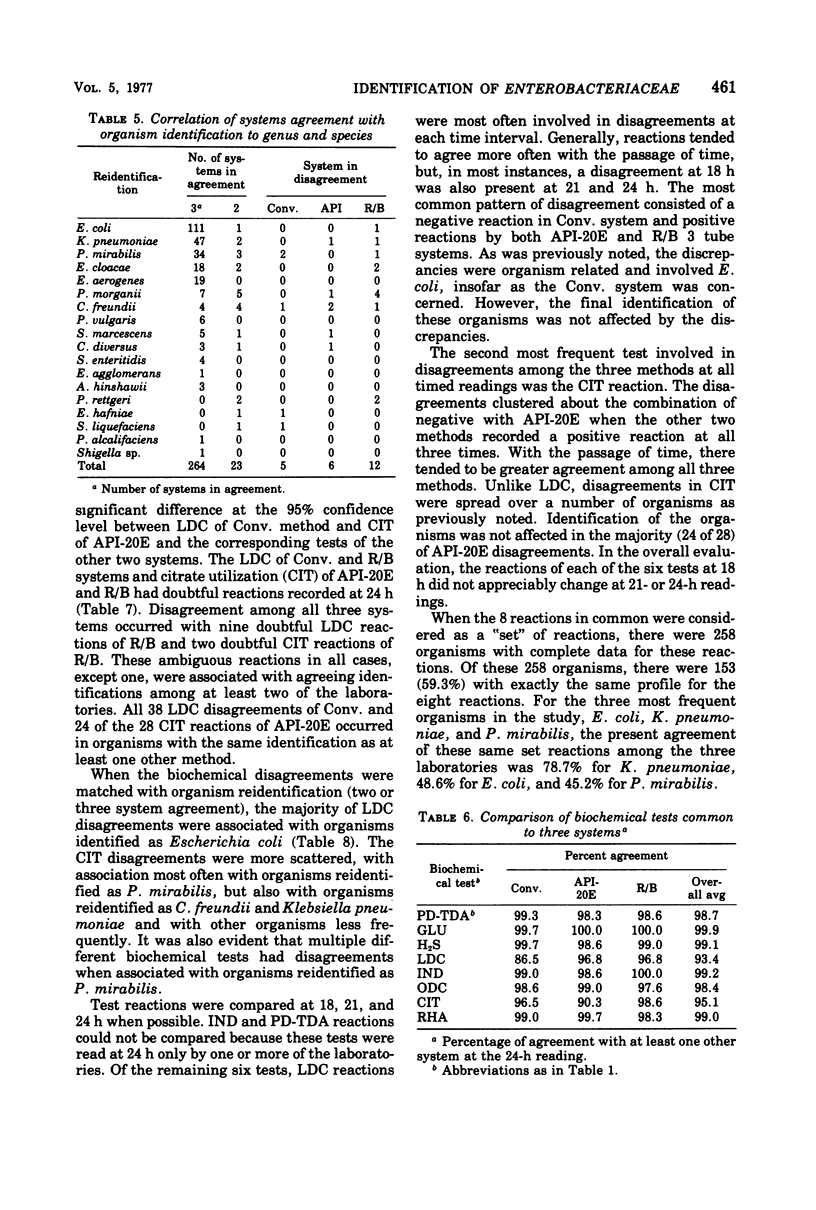
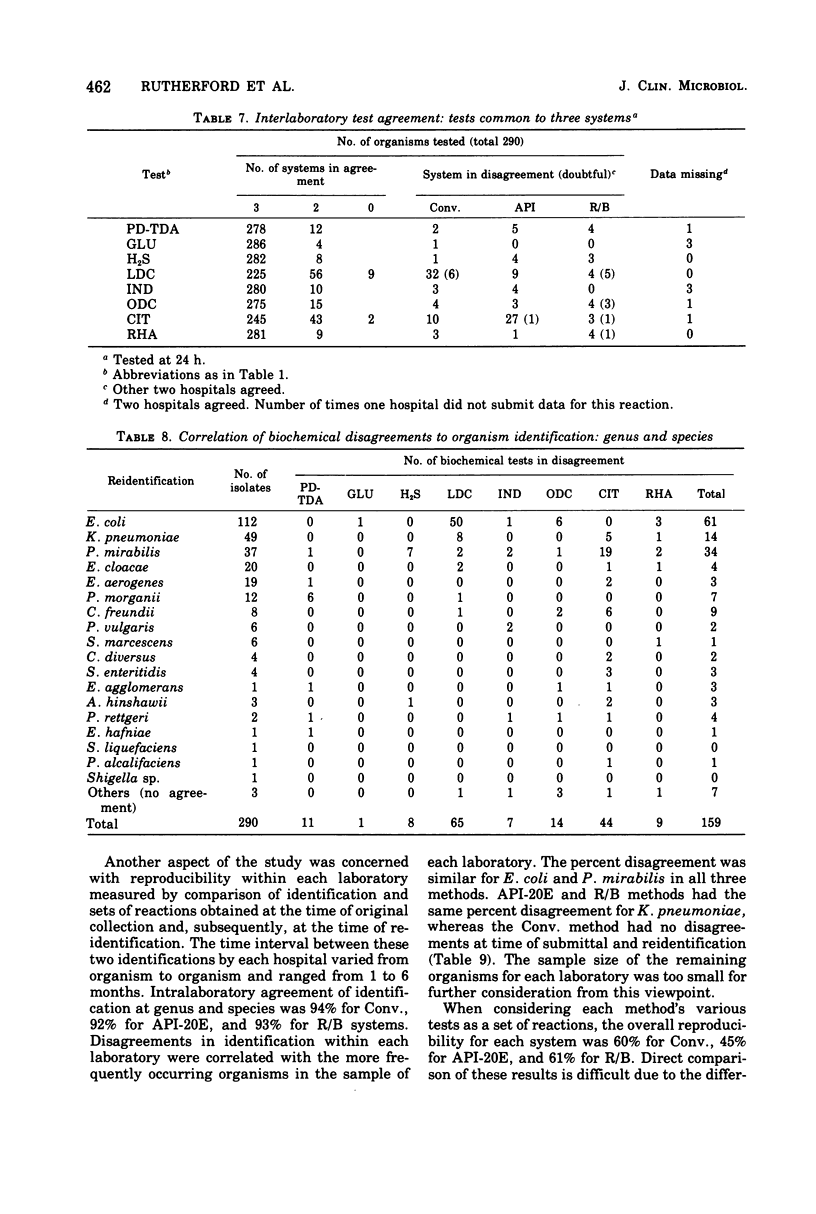
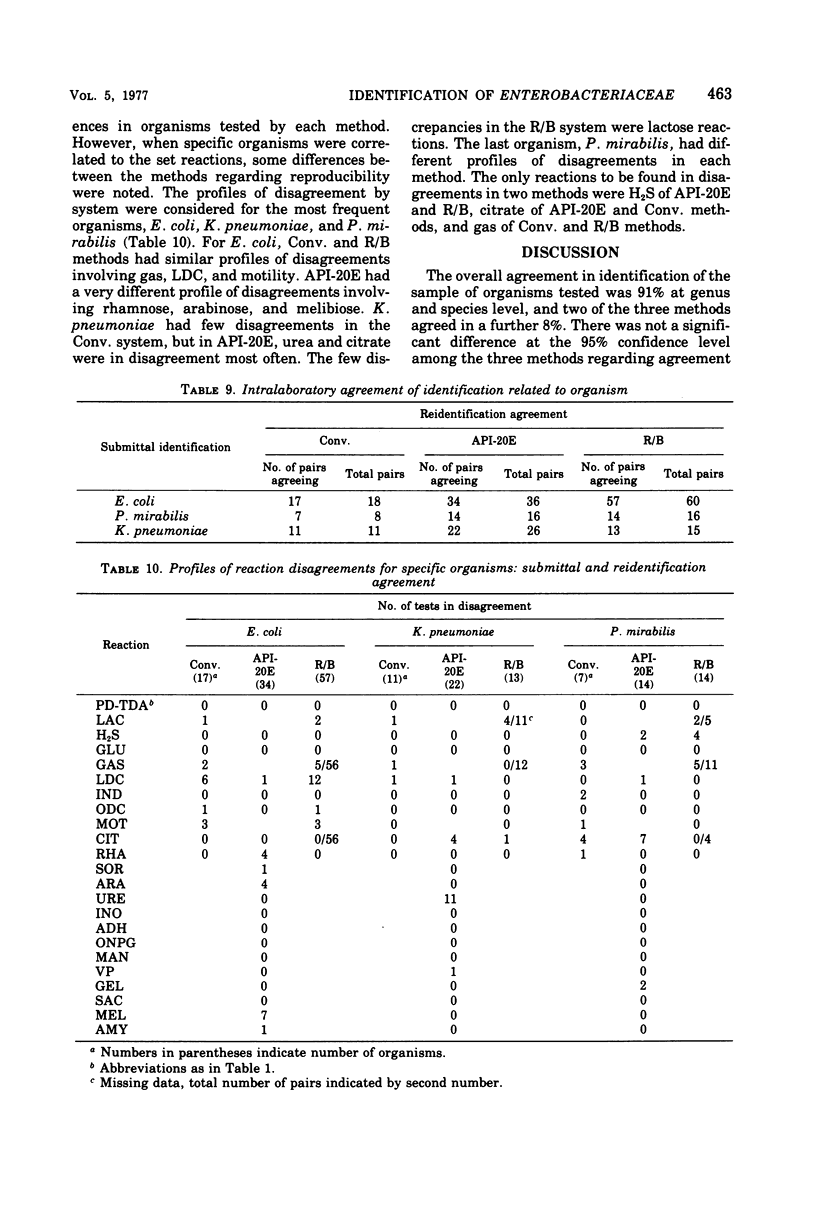
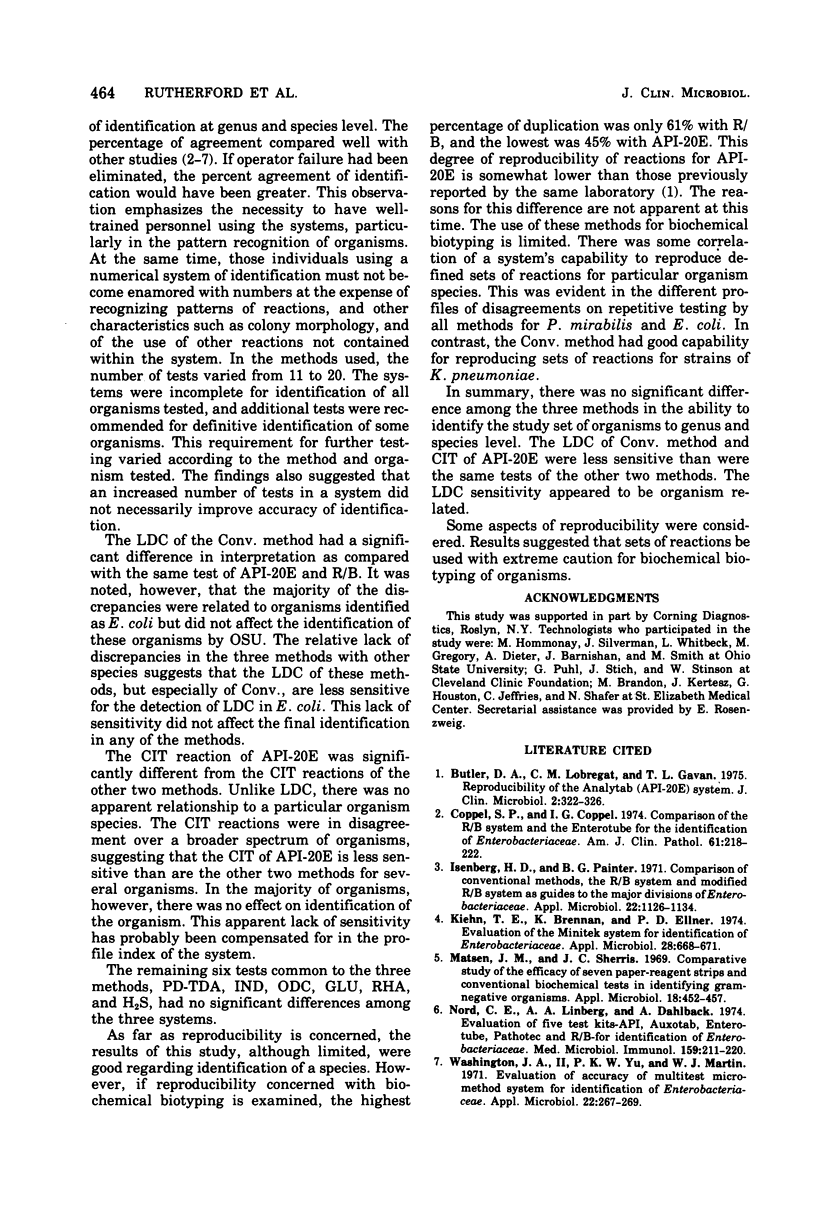
Selected References
These references are in PubMed. This may not be the complete list of references from this article.
- Butler D. A., Lobregat C. M., Gavan T. L. Reproducibility of the analytab (API 20E) system. J Clin Microbiol. 1975 Oct;2(4):322–326. doi: 10.1128/jcm.2.4.322-326.1975. [DOI] [PMC free article] [PubMed] [Google Scholar]
- Coppel S. P., Coppel I. G. Comparison of the R-B system and the Enterotube for the identification of Enterobacteriaceae. Am J Clin Pathol. 1974 Feb;61(2):218–222. doi: 10.1093/ajcp/61.2.218. [DOI] [PubMed] [Google Scholar]
- Isenberg H. D., Painter B. G. Comparison of conventional methods, the R-B system, and modified R-B system as guides to the major divisions of Enterobacteriaceae. Appl Microbiol. 1971 Dec;22(6):1126–1134. doi: 10.1128/am.22.6.1126-1134.1971. [DOI] [PMC free article] [PubMed] [Google Scholar]
- Kiehn T. E., Brennan K., Ellner P. D. Evaluation of the Minitek system for identification of Enterobacteriaceae. Appl Microbiol. 1974 Oct;28(4):668–671. doi: 10.1128/am.28.4.668-671.1974. [DOI] [PMC free article] [PubMed] [Google Scholar]
- Matsen J. M., Sherris J. C. Comparative study of the efficacy of seven paper-reagent strips and conventional biochemical tests in identifying gram-negative organisms. Appl Microbiol. 1969 Sep;18(3):452–457. doi: 10.1128/am.18.3.452-457.1969. [DOI] [PMC free article] [PubMed] [Google Scholar]
- Nord C. E., Lindberg A. A., Dahlbäck A. Evaluation of five test-kits-API, AuxoTab, Enterotube, PathoTec and R-B-for identification of Enterobacteriaceae. Med Microbiol Immunol. 1974 Mar 22;159(3):211–220. doi: 10.1007/BF02121337. [DOI] [PubMed] [Google Scholar]
- Washington J. A., 2nd, Yu P. K., Martin W. J. Evaluation of accuracy of multitest micromethod system for identification of Enterobacteriaceae. Appl Microbiol. 1971 Sep;22(3):267–269. doi: 10.1128/am.22.3.267-269.1971. [DOI] [PMC free article] [PubMed] [Google Scholar]


